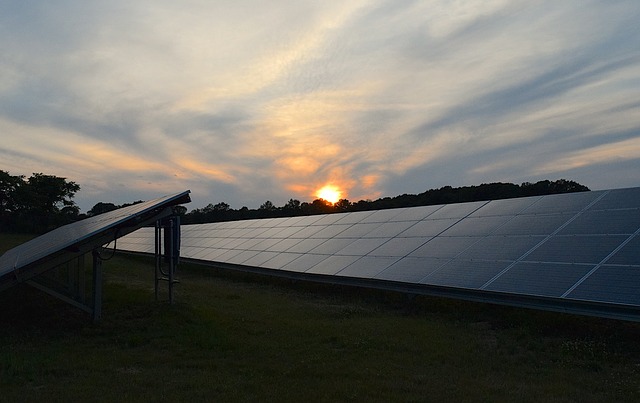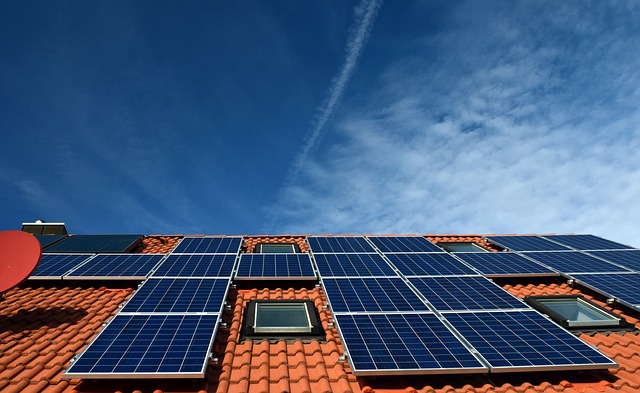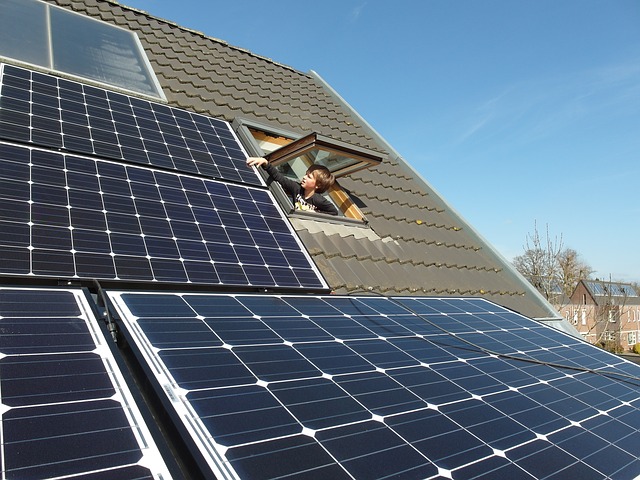What size solar system do I need?
With the increased interest in environmentally friendly options across the globe, from less plastic bags to reusable coffee cups to renewable energy, the interest in solar system arrangements has shot up exponentially. If you type in ‘solar system choices’ into Google, you will receive over 78 million results and likely an overwhelming feeling of, well, being overwhelmed. What system should you get? How much should it cost? Where should it be located? What are reliable brands? What size should it be? Who installs them? These questions, among a huge range of others, have likely crossed your mind on more than one occasion. So, to make things a little easier, we have put together some information regarding one specific, and very important, question – what size solar system do I need?

Solar system factors to consider
When it comes to the size of a solar system, there are quite a few things to consider before choosing the correctly-sized model for your needs. If you are unsure about any of the below or have any other questions or concerns, give Fallon Solutions a call on 1300 762 260 today. We can not recommend it highly enough – speak to professionals, their job is to know about solar, so use their expertise and knowledge!
What is your electricity usage currently?
The first question to ask yourself is, how much energy to you and your household currently use? Take a look at your electricity bills for the last year or two and see what your average yearly and daily use is (take a look below to calculate this) but, as a guide, a typical home uses around 18-20kWh of energy a day. Generally, a 5kW solar system would meet most of the daytime power for a home with these daily power needs.
How much of your electricity usage is during daylight hours?
This is a crucial factor when considering the size of the system that you need. Take a look at this scenario provided by Solar Quotes :
The average Australian household consumes 18kWh of electricity each day. If we use a house in Melbourne as an example, you would need a 5kW solar system to generate this amount of power. However, if the household only consumes 40% of its electricity during daylight hours, there is no point in installing such a large system. In this instance, a system that generates on average 7.2kW (40% x 18 kW) of electricity per day would be sufficient. Therefore, a 2kW system is likely to deliver the most cost effective solution and achieve the best financial payback.

Are you looking at installing just panels, or a battery as well?
If you are after something that stores excess solar energy during the day to use later on into the evening, you will need a solar battery. According to Solar Quotes :
If you are considering battery storage, you need to factor this into your system size equation. If we take the previous example, it may be beneficial to generate the 18 kWh of electricity it would take to power your property. If this were the case, you would need to upgrade the size of your solar panel system to 5 kW and add a battery capable of storing the excess solar power you generate during the day, for use at night, therefore storage capacity in excess of 10 kW would be required.
How many solar panels do you need?
When looking at this question and a possible answer, consider the following:
- If you have a lot of space to place your solar panels, it may be more economical to buy more low cost solar panels and have them installed, as opposed to fewer, more expensive panels.
- The power output of your whole system matters more than the number or size of your solar panels
- You will need fewer solar panels if the panel’s nominal power rating (and actual power output) is high. Alternatively, you can produce more power (depends on your power needs)
- Fewer panels mean quicker installation
- Solar panels range in length, width and power output, so take a look at their specs and compare the models and their prices extensively

As an example, you could use four 250W Jinko panels, taking up 6.5m² of roof space, to make a 1000W array. But four 327W Sunpower panels would take up the same overall area and form a more powerful 1308W array (although the Sunpower panels would cost you more).
What space is your solar system being installed in?
You may be keen to have a solar system installed in your home, but what space do you have to put it in? And will that be enough? It is all good to calculate the size of the solar system that will power your home, but do you have the appropriate space to house a system of that size? Generally, the standard dimensions for solar panels for your home are 1.70m x 1.00m, which is around 1.7m² for every panel that is installed. Note however that the wattage output (W) of the panels will probably vary between 250W and 330W. If you are looking for a rough guide, you will need 4 x 250W panels, or 3 x 330W panels, for every 1kW of your solar system. As an example, a 5kW system will require around 15-20 solar panels and anywhere between 25.5 and 34m² of roof space.
What are your solar goals?
Do you have any personal preferences? Have you considered what kind of system will suit your lifestyle? How much electricity are you wanting from your solar system? These questions, among others, are all factors to consider when setting your solar goals and applying them to the options available.
How is your solar system going to be used?
If you are looking at solar system size, any quote or estimate you receive will be based on the average solar generation potential of you property. Bear in mind that, if you are relying on your solar system to produce particular levels of power in both winter and summer, your system requirements may need to be altered accordingly.

Are you planning on going ‘off-grid’?
If you are planning on going ‘off-grid’, you will need a larger solar system than most. This is due to the fact you will be completely reliant on your solar system and 100% of your electricity will be sourced from solar energy and any backup options you may have in place. These kinds of systems, sometimes known as Stand-Alone Power Systems (SAPS) offer independence and sustainability and work by generating electricity from solar panels and using it to charge a solar battery via a charger controller. It is best to speak to a professional about whether this kind of system is suitable for you and your location – and whether you have enough space to house it!
What is your budget?
Ahh, the question of finances. When it comes to solar, there can be some high upfront costs however the long-term benefits are huge. In saying this, the amount you are able to provide for initial costs will affect the size of the system you can get, so make sure you do your maths before you start to ensure you can get the best system for your needs.
Tip: It is wise to check the prices for whole systems, as opposed to just individual panels, as you will likely be able to get more for your money.
How much money will I save using solar power?
One of the big questions people ask, and the last one we will consider here, is how much money are you actually saving? Depending on the solar system arrangement that you choose and where you are located, it takes anywhere from two to seven years for a solar system to pay for itself. After that time, you can start considering counting the savings. There is also the environmental impact you need to consider, but that is a topic for another day.

Calculating the size of the solar power system
If you are reading the above and are still unsure, there is a way to approximately calculate the size of the system you’ll need, based on your current electricity usage. A word of caution, however, this way of calculating is very simplistic, almost too simplistic, therefore it may not provide a truly accurate result. Use it more as a guide, and used in conjunction with all the other factors (and may not result in a $0 electricity bill, which is what most people are after!).
Steps to calculating solar system size
- Step 1: Know the difference between kW and kWh
The ‘k’ stands for kilo, meaning 1000, and the ‘W’ stands for Watt, which is a measure of power. Finally, the ‘h’ stands for hour, which is clearly a measurement of time. So, ‘kW’ means 1000 Watts and is a measure of power – in this case, the size of a solar system is defined by its peak power. e.g. a 1 kW system can produce 1 kW of power on really sunny days. On the other hand, ‘kWh’ stands for kilowatt-hour and is a measure of energy, as opposed to power. When it comes to solar panels, if your system consistently outputs 1 kW of power for a whole 60 minutes, it will have produced 1 kWh of energy. The amount of electricity your solar system generates (or your use) is defined in kWhs.
- Step 2: Grab out your most recent electricity bill and take a look at your usage. It is likely a quarterly bill, so we will work off that assumption, however, if it isn’t alter your calculations accordingly. Take a look at the top of your bill, which should show how many kWh’s you have used in the previous 4 quarters (you will likely need to add the 4 quarters up, to figure out the entire year).
- Step 3: Divide your annual kWh’s by 365, which will calculate your daily usage.
- Step 4: Check on the below table how many kWhs per installed kW of solar panels you can expect to get for your location.
City Name
- Adelaide
- Alice Springs
- Brisbane
- Cairns
- Canberra
- Darwin
- Hobart
- Melbourne
- Perth
- Sydney
kWh
- 4.2 kWh
- 5.0 kWh
- 4.2kWh
- 4.2kWh
- 4.3kWh
- 4.4kWh
- 3.5kWh
- 3.6kWh
- 4.4kWh
- 3.9kWh
Find the city that is closest to you and divide your daily kWhs by the listed kWh number. This should provide you with an estimated solar panel size!
As an example :
If you lived near Alice Springs and had a yearly usage of 4,380 kWh. To calculate your daily usage, you divide your yearly usage by 365, which equals 12 kWh. Then, as the closest city to you is Alice Springs, you would divide your daily usage amount of 12 kWh by 5 kWh, which equals 2.4. You would therefore need a 2.4kW sized solar system around Alice Springs to be able to generate the same amount of energy as you use. Remember, this is a rough estimate only, and we highly recommend that you speak to a qualified professional for a more accurate sizing calculation.

Give Fallon Solutions solar specialists a call
If you have any questions, or would like to organise a technician to attend your home or workplace, give Fallon Solutions a call on 1300 762 260 or complete an online enquiry today. Get in contact now.
Resources :
CHOICE (Choosing quality solar panels) : https://www.choice.com.au/home-improvement/energy-saving/solar/buying-guides/solar-panels
CHOICE (Sizing your solar panel system) : https://www.choice.com.au/home-improvement/energy-saving/solar/articles/how-much-solar-do-i-need
Solar Quotes (How much Solar Power Do I Need?) : https://www.solarquotes.com.au/how-does-solar-power-work/how-much-power-do-i-need/
Solar Calculator (Choose Your Optimal System Size) : https://solarcalculator.com.au/solar-system-size/
Your Home (Photovoltaic Systems) : http://www.yourhome.gov.au/energy/photovoltaic-systems
Solar Quotes (Difference between kW and kWh) : https://www.solarquotes.com.au/blog/kw-and-kwh-what-is-the-difference/
*Note : This is general information only and should be used in conjunction with other resources, not as a sole informational source.
